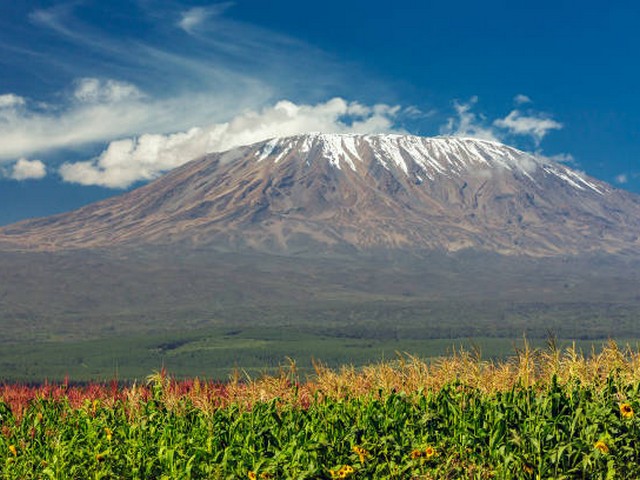Staying Fit and Healthy for Kilimanjaro Trekking
Embarking on an adventure up the iconic Mount Kilimanjaro is a dream for many, filled with stunning vistas, uniquely diverse ecosystems, and the exhilarating challenge of reaching the summit, Uhuru Peak. Whether you’re a seasoned trekker or a motivated beginner, ensuring you’re fit and healthy before you start your climb is crucial for a successful and enjoyable experience. In this blog post, brought to you by the Kilimanjaro Centre For Trekking and Ecotourism (KCTE), we will dive into essential tips and strategies to prepare your body and mind for the majestic Mount Kilimanjaro trek.
Why Physical Fitness Matters on Mount Kilimanjaro
Mount Kilimanjaro isn’t just another hill walk. Standing proudly as Africa’s highest peak, it demands respect and preparation. The altitude, length of the trek, and varying climatic conditions can challenge even the fittest adventurers.
Physical fitness significantly enhances your ability to cope with the mountain’s demands, reduces the risk of altitude sickness, and increases your overall enjoyment of the trek. This guide will navigate through the key aspects of staying fit and healthy as you prepare for this incredible journey.
Building Your Kilimanjaro Fitness Plan
Cardiovascular Endurance
Heart-pumping cardiovascular activities are fundamental. Start with exercises like jogging, cycling, or swimming to increase your stamina. Aim for at least 150 minutes of moderate aerobic activity or 75 minutes of vigorous activity each week. As your fitness improves, incorporate hill and stair climbing to mimic the ascent on Kilimanjaro.
Strength Training
Kilimanjaro trekking involves long days of walking, often on steep and uneven terrain. Strengthening your legs, core, and upper body will make these days much more manageable. Focus on exercises like squats, lunges, planks, and push-ups. Weight training can also be beneficial, particularly exercises that strengthen the back and shoulders, which will carry your backpack.
Flexibility and Balance
Flexibility helps reduce the risk of injuries and improves recovery times. Yoga and Pilates are excellent for building core strength, balance, and flexibility. These exercises also prepare your body to handle the rigors of uneven trails and reduce your fall risk.
Nutrition and Hydration Strategies
Eating a balanced diet and staying hydrated are just as important as your physical training. When training for Kilimanjaro:
Nutrition
Focus on a nutrient-rich diet that includes carbohydrates for energy, lean proteins for muscle repair, and fats for long-term fuel. Don’t forget fruits and vegetables rich in vitamins, minerals, and antioxidants to boost your immune system.
Hydration
Hydration is crucial, especially at altitude where water loss can sneak up on you. Aim to drink at least two to three liters of water daily before your trek. This habit will help you immensely once you start your climb.
Acclimatization Tips
To increase your chances of a successful summit, it’s vital to understand the effects of high altitude. Including some high-altitude hikes in your training can be incredibly beneficial if accessible. Additionally, choosing a longer route, if possible, allows more gradual acclimatization and a higher success rate.
Mental Preparation
Mental stamina is as crucial as physical endurance. Prepare yourself mentally for the challenge ahead by setting realistic goals and maintaining a positive mindset. Visualization techniques, where you imagine yourself successfully reaching the summit, can also be a powerful tool.
Rest and Recovery
Rest is not the enemy of training; it is a part of it. Ensure you get enough sleep each night (7-9 hours), and include rest days in your training regimen to allow your body to recover and grow stronger.
Choose the Right Gear
Having the right gear can make or break your Kilimanjaro experience. Invest in good quality, durable trekking boots, a comfortable backpack, and appropriate clothing for varying weather conditions. Don’t forget essentials like a sleeping bag rated for low temperatures and a quality headlamp.
Before You Go
Before you set off on your Kilimanjaro adventure, make sure to check in with a healthcare provider, get the appropriate vaccinations, and ensure you have adequate travel insurance.
Join Us at Kilimanjaro Centre For Trekking and Ecotourism (KCTE)
Ready to take on the challenge of Mount Kilimanjaro? Join us at the Kilimanjaro Centre For Trekking and Ecotourism (KCTE), where we offer expert-guided treks that cater to every fitness level. Our experienced guides, comprehensive support, and well-crafted itineraries ensure you have a memorable and safe trekking experience.
FAQ Section
What is the best time of year to climb Kilimanjaro?
The best times to climb Kilimanjaro are during the dry seasons: January to mid-March and June to October.
How long does it take to prepare for a Kilimanjaro trek?
It is advisable to start training at least 6 months before your scheduled trek to adequately prepare your body and mind for the demands of the climb.
Can beginners climb Kilimanjaro?
Yes, beginners can successfully climb Kilimanjaro, provided they undertake appropriate physical preparation and choose a suitable routing option that allows ample time for acclimatization.
What are the symptoms of altitude sickness?
Symptoms include headache, nausea, dizziness, and tiredness. Acclimatization and proper hydration can help manage and prevent these symptoms.
Conclusion
Climbing Kilimanjaro is an exhilarating goal, but it requires serious physical and mental preparation. By following the fitness, nutrition, and health tips outlined above, you’ll be in a strong position to enjoy the journey and reach the summit. Remember, the journey to Uhuru Peak starts with a single step of preparation.
Are you ready to take that step? Book your Kilimanjaro adventure with the Kilimanjaro Centre For Trekking and Ecotourism (KCTE) today, and let us guide you to the roof of Africa, where the world seems just within your reach.




